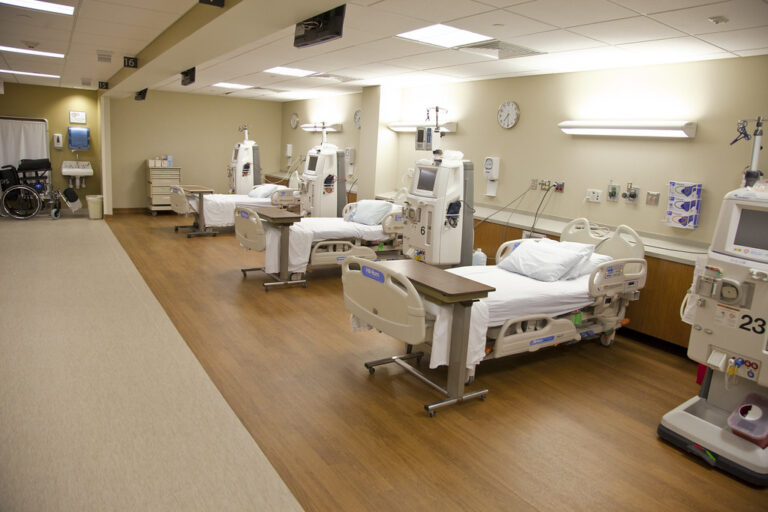Hemodialysis
Hemodialysis in Navi Mumbai | Dr. Ravindra Nikalji
Hemodialysis is the most common type of dialysis. This process uses an artificial kidney (hemodialyzer) to remove waste and extra fluid from the blood. The blood is removed from the body and filtered through the artificial kidney. The filtered blood is then returned to the body with the help of a dialysis machine.
To get the blood to flow to the artificial kidney, your doctor will perform surgery to create an entrance point (vascular access) into your blood vessels. The three types of entrance points are:
- Arteriovenous (AV) fistula. This type connects an artery and a vein. It’s the preferred option.
- AV graft. This type is a looped tube.
- Vascular access catheter. This may be inserted into the large vein in your neck.

Both the AV fistula and AV graft are designed for long-term dialysis treatments. People who receive AV fistulas are healed and ready to begin hemodialysis two to three months after their surgery. People who receive AV grafts are ready in two to three weeks. Catheters are designed for short-term or temporary use.
Hemodialysis treatments usually last three to five hours and are performed three times per week. However, hemodialysis treatment can also be completed in shorter, more frequent sessions.
Most hemodialysis treatments are performed at a hospital, doctor’s office, or dialysis centre. The length of treatment depends on your body size, the amount of waste in your body, and the current state of your health.
After you’ve been on hemodialysis for an extended period of time, your doctor may feel that you’re ready to give yourself dialysis treatments at home. This option is more common for people who need long-term treatment.
- Benefits
- Possible risks
- Hemodialysis requires less time than peritoneal dialysis
Hemodialysis treatments may occur at a hospital, dialysis center or your own home three times a week, with each session lasting between three and five hours. This leaves most of the week dialysis-free. By contrast, peritoneal dialysis takes between 10 and 12 hours every day. - Hemodialysis carries a relatively low risk of infection
Hemodialysis uses and arteriovenous (AV) fistula, which is the gold standard vascular access used to access a person’s blood. Common complications of peritoneal dialysis include infections of the abdominal lining or at the site where the catheter is inserted to carry the cleansing fluid. - Hemodialysis requires less surgical interventions
AV fistulas for dialysis last many years, longer than transplanted kidneys and catheters for peritoneal dialysis. This type of dialysis does not typically require additional surgeries.
Hemodialysis risks include:
- low blood pressure
- anaemia, or not having enough red blood cells
- muscle cramping
- difficulty sleeping
- itching
- high blood potassium levels
- pericarditis, is an inflammation of the membrane around the heart
- sepsis
- bacteremia, or a bloodstream infection
- irregular heartbeat
- sudden cardiac death, the leading cause of death in people undergoing dialysis
